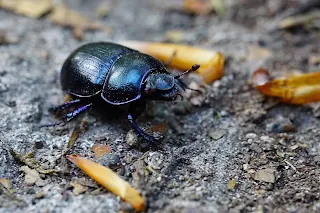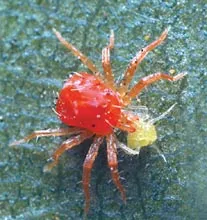In the agricultural
sector, there are a number of helpful insects, frequently referred to as
"beneficial insects," that are essential for pest management,
pollination, and maintaining the equilibrium of the environment. These insects
have an important role in soil health, nitrogen cycling, and pest management in
addition to pollination and pest control. They control the number of prey
species and supply food for other animals like birds and mammals. The
biodiversity of terrestrial ecosystems as a whole. They can offer useful
information about the state of the environment and the quality of the habitat,
and they are employed as indicators of ecosystem health. These insects support
sustainable farming methods and lessen the demand for chemical pesticides. In this
blog, we going to see details of
some important beneficial agriculture-friendly insects.
Ladybugs: Ladybugs are ferocious predators of pests with delicate bodies like
aphids, mealybugs, mites, and others. They are very useful for keeping harmful
pests away from crops like soybeans, citrus fruits, and various vegetables.
Green lacewings: The larvae of green lacewings are infamous for being
vicious predators of aphids, thrips, and caterpillar eggs. For eradicating
these pests from gardens and agricultural fields, they are quite successful.
Honeybees: Numerous fruit and vegetable crops, such as almonds, apples,
blueberries, and watermelons, depend on honeybees for pollination. Higher
harvests and higher-quality produce are guaranteed thanks to their pollination
work. We can say that agriculture will end without Honeybees.
Bumblebees: Excellent pollinators of many crops, including tomatoes,
peppers, and berries, bumblebees are. They are renowned for using a technique
called "buzz pollination" to help release pollen from particular
blooms that other bees might find difficult to fertilize.
Parasitic wasps: On the bodies of problem insects including
caterpillars, aphids, and whiteflies, many species of parasitic wasps lay their
eggs. When the wasp larvae hatch, they eat the host, which effectively reduces
the population of pests. Some of the parasitic wasps that are beneficial to
agriculture include the Braconid, Trichogramma, Chalcid, and Ichneumonid.
Praying mantises: As general predators, praying mantises consume a wide
range of insects, such as grasshoppers, crickets, and caterpillars. They may
not have much of an effect on crop pests, but they do contribute to the
ecosystem's overall balance.
Ground Beetles: The nocturnal predators known as ground beetles eat a
variety of pests, including snails, caterpillars, and insect eggs. In organic
farming systems, they are especially helpful in limiting insect numbers. Harpalus
rufipes, Pterostichus melanarius, Poecilus cupreus, Calosoma scrutator, and
Carabus nemoralis are a few types of ground beetles.
Hoverflies: Hoverflies, commonly referred to as flower flies, are
significant pollinators and aphids' primary natural enemies. Their larvae are
ferocious predators that prey on soft-bodied pests like aphids and other pests
in different crops.
Dragonflies: As general predators, dragonflies consume a wide range of
flying insects, such as gnats, flies, and mosquitoes. Although they might not
directly affect agricultural pests, they help to keep a healthy ecology in and
near agriculture.











